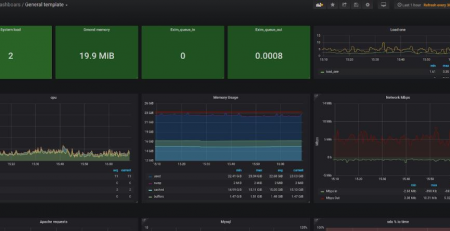The effects of downtime
Although selling hardware or software might not be your business, the stability of your IT infrastructure plays a vital role in the success of your business. You may be wondering why, so we’re here to give you a better idea on what happens when a business experiences downtime (hint: things go south).
Downtime can cause financial losses
A 2019 Server OS Reliability Survey found that one hour of downtime costs:
- at least $100,000 for 98% of companies
- $300,000 or higher for 86% of businesses
- $1 million to over $5 million for 34% of surveyed companies
The numbers mentioned do not include litigations, fines or civil or criminal penalties that may subsequently arise due to lawsuits or regulatory non-compliance issues.
An excellent example of such a loss was the 2010 Virgin Blue outage, where an IT failure led to $15-$20 million of losses. Virgin Blue is an Australian airliner who experienced a major IT outage which spread over several days. As a result of the disruption, 50,000 customers of Virgin Blue were unable to access the check-in system.
A similar incident in 2017 caused by a data center power outage forced British Airways to cancel over 400,000 flights resulting in a $112 million loss.
Another great example of significant losses caused by an IT outage was the global Facebook outage which happened in April last year. Considering Facebook’s financial reports and how much money Facebook makes in a day, the company lost around $89,130,432 for the 12-hour outage.

Downtime can hurt the brand’s image
System outages can quickly turn into a PR nightmare, especially if you’re unable to give your customers an ETA on when something will be fixed.
Today’s customers usually turn to social media to ask for support, and if they don’t get it, they will make sure to voice their discontent. Statistics show that 1 in 3 social media users prefers using social media when reaching out to a brand or business for customer service. With that in mind, it’s understandable that an outage can quickly escalate on social media, and if not handled with care, it can easily become a PR disaster.
One of such PR disasters was the 2011 Blackberry outage, which lasted for three days and caused significant service disruption for 70 million users around the world. The company was unable to provide a reasonable explanation and an ETA on when the issue will be resolved and offered little to none updates on the issue. As a result, many Blackberry users turned to social media and other platforms to complain, many of them saying they will leave the brand and switch to one of the competitors.
The outage also caused a loss in credibility for the brand. After the blackout, comScore estimated that the BlackBerry smartphone platform market share decreased by 2.9 percent down to 16 percent, accounting for between September 2011 and December 2011.
The outage also caused a loss in credibility for the brand. After the blackout, comScore estimated that the BlackBerry smartphone platform market share decreased by 2.9 percent down to 16 percent, accounting for between September 2011 and December 2011.
Downtime can cause data loss
One of the biggest fears of most companies is (or should be) data loss. We’re not just talking about the content on your website; we’re talking about your orders, customer data, business data, application data and anything else that is stored on your servers.
A 2019 study done by Dell shows that over a quarter of the surveyed companies suffered irreparable data loss in the last 12 months. When severe data loss happens, business suffers:
- 94 percent of companies that experience severe data loss do not recover
- 51 percent of these companies close within two years of the data loss
- 43 percent of these companies do not reopen again
- 70 percent of small firms go out of business within a year of a large data loss incident
Data loss can be caused by many different reasons, such as not using a backup system, ransomware attacks or just a plain human error. An unexpected loss of network access or any issues with the backup system can also cause a data loss, resulting in further financial losses and business disruption.
Stability is the key
As we’ve established so far, downtime and IT service disruption can cause many problems for a business, and may also lead to the company closing down. Having a stable and redundant infrastructure is extremely important to ensure your business’ stability.
If your infrastructure is unstable and prone to downtime and outages, or you’re just wondering how your infrastructure fares in terms of stability, redundancy and security, schedule a call and our engineers will do an Infrastructure Assessment for you. With 18 years of experience in the field, we’ve seen our share of bad setups so we can easily pinpoint any problems in your current Infrastructure.
Also make sure to follow us on social media and follow our blog, as we’ll follow up on this post with an in-depth instruction post on lowering your downtime.












